How Straight Male Celebs Are Raising Hell for Trans Athletes
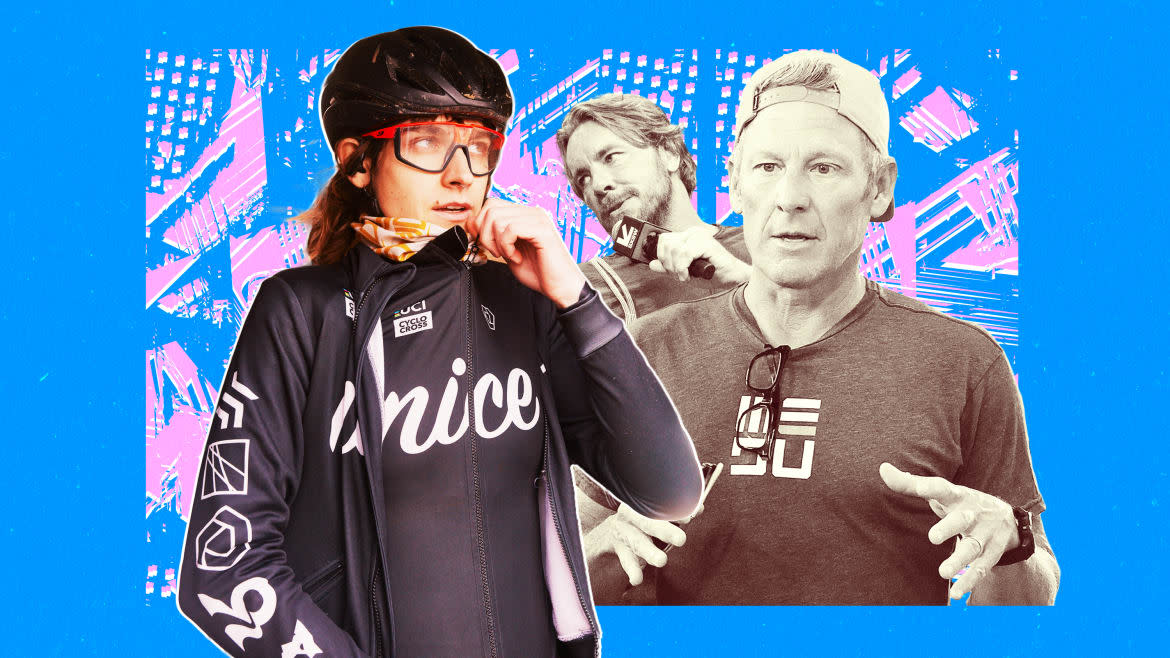
- Oops!Something went wrong.Please try again later.
- Oops!Something went wrong.Please try again later.
- Oops!Something went wrong.Please try again later.
Late last spring, Olympic figure skater and LGBTQ+ icon Adam Rippon listened from across the set of Fox’s celebrity reality TV series, Stars on Mars, as Lance Armstrong—famous for his impressive Tour de France wins, survival of testicular cancer, and the discovery of his side-hustle as head of a doping ring—dropped a bombshell on the casts’ quiet afternoon.
“You want to transition?” Armstrong can be seen on the show telling no one in particular, opining unprovoked on trans athletes in elite sport. “Let’s do it—you can have your own category. What’s unfair about that?”
It was a controversial question from, to quote Rippon, “The greatest cheater in American sports.”
Interviewing Rippon ahead of the incident’s air date, I joined our video call expecting cute anecdotes about the Real Housewives and former child stars who were part of the Stars on Mars cast, or perhaps some behind-the-scenes gossip from the show that Rippon would go on to win, claiming the title: “Brightest Star in the Galaxy.”
What I didn’t expect was a deep dive into trans rights, doping, and the future of elite sports. Yet somehow, with Adam Rippon as my subject, it wasn’t entirely surprising.
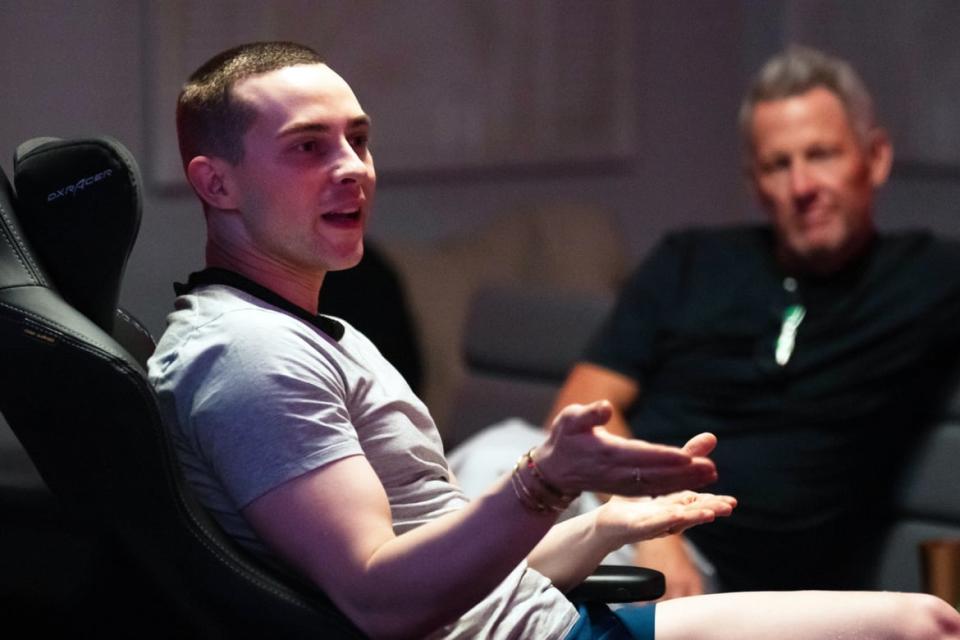
The former figure skater, who retired from the sport in 2018, has gone on to forge a successful career in entertainment. He’s built a brand on personality, and brings a particular acerbity to the superficial that has seen him retain fans long after the typical athlete’s 15 minutes of post-Olympic fame. Normally not one to shy away from controversy surrounding LGBTQ+ rights, that day on set, he chose not to interact with Armstrong on a topic he felt had no place on lighthearted reality TV.
But weeks after filming, Rippon was still bothered by it.
“It made me feel like, OK, this is a really inappropriate situation. And we would have never gotten into it if [Armstrong] had been able to just see himself in the mirror for a second,” he told me at the time.
We’re seeing just how powerfully—and with such charged rhetoric—these conversations are piercing the pop-culture zeitgeist, mirroring the impassioned debate about trans athletes that’s happening within governing agencies in the world of sports. Last month, for example, non-binary TV host and activist Jonathan Van Ness, best known for his fan-favorite work on Netflix’s Queer Eye, made headlines for an emotional and heated exchange with Dax Shepard on the actor’s podcast, Armchair Expert.
On the episode, a debate that began with weighing the relative liberal leaning of The New York Times turned into a discussion on trans athletes, and protecting cisgender women’s sports. “Do I wish that the trans woman athlete had access and could play and follow her dream? I do,” the host said at one point. “Will I elevate her rights over women? We’re pretending that women aren’t the ultimate marginalized class throughout history.”
While Shepard—known for his contrarian, “devil’s advocate” approach on the podcast—cannot be compared to the openly transphobic diatribes Armstrong has since espoused, Van Ness, in tears, said they were “tired” of having to fight for inclusion. “I wish that people were as passionate about little kids being able to be included or grow up as they were about fictitious women’s fairness in sports,” Van Ness told Shepard.
On the one hand, these awkward moments could be seen as flippant bids to create drama in otherwise fairly tame and wholesome shows. But in a climate of growing transphobic rhetoric, these sentiments have real-world ramifications.
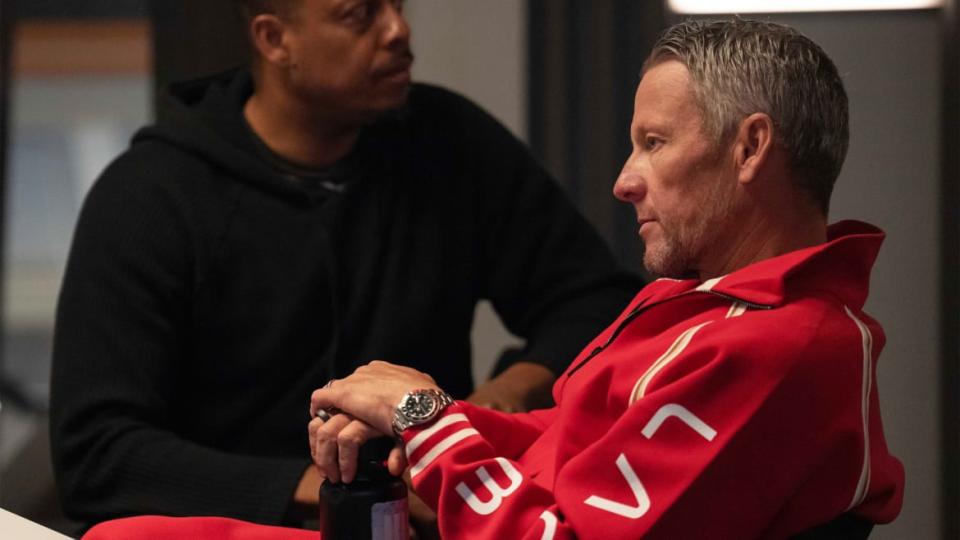
In July, following similar rulings by World Aquatics and World Athletics, Union Cycliste Internationale (UCI)—cycling’s governing organization (the same that banned Armstrong from competition for doping) suddenly reversed its policy on trans athletes. Now—instead of verifying at least 24 months taking gender-affirming-hormone-therapy, and a cis-typical plasma testosterone concentration of 2.5 nanomoles per liter—trans women cyclists who have undergone male puberty are completely barred from competing in the women’s category.
Given the recent tidal wave of laws making their way through Republican-led legislatures preventing young people from receiving gender-affirming care in the first place, this appears particularly cruel. Sport, the so-called great equalizer, has been co-opted as the frontline of political anti-trans movements, and the two are now inextricably intertwined at this significant turning point for the future of trans athletes in elite sports.
UCI says the reversal is due to “scientific uncertainties” surrounding other potential gains such as bone structure. But ultimately the ruling was made in the wake of extensive online backlash to trans cyclist Austin Killips’ wins at the Tour of the Gila in Silver City, New Mexico (a grueling 65-mile, five-day qualifying event, which she won by a not-unusual-margin of 1 minute 29 seconds) and the 131-mile Belgian Waffle Ride in North Carolina, which she won by four minutes.
Obviously, Armstrong did not have any real impact on UCI’s decision. But comments like his drown out facts about trans women in sports, capitalizing instead on unproven fears, dog whistles, and misinformation. The result is that athletes like Killips are prevented from participating meaningfully with peers, as regulations based on science are being reversed in response to this culture war.
“I think explicit non-binary categories are a positive thing, making space for people who identify as such,” Killips told me. “But open categories can also feel very ‘separate but equal’ in their application,’” she said, referencing the argument Armstrong had championed, adding: “They obscure the reality that HRT (gender-affirming hormone therapy) [diminishes] the physical capacity of trans women. And in doing so, they fail to offer a viable avenue for competition. It’s not great to have a second class of women who are subject to a field filled with people who don't have to maintain a performance-suppressing medical regimen.”
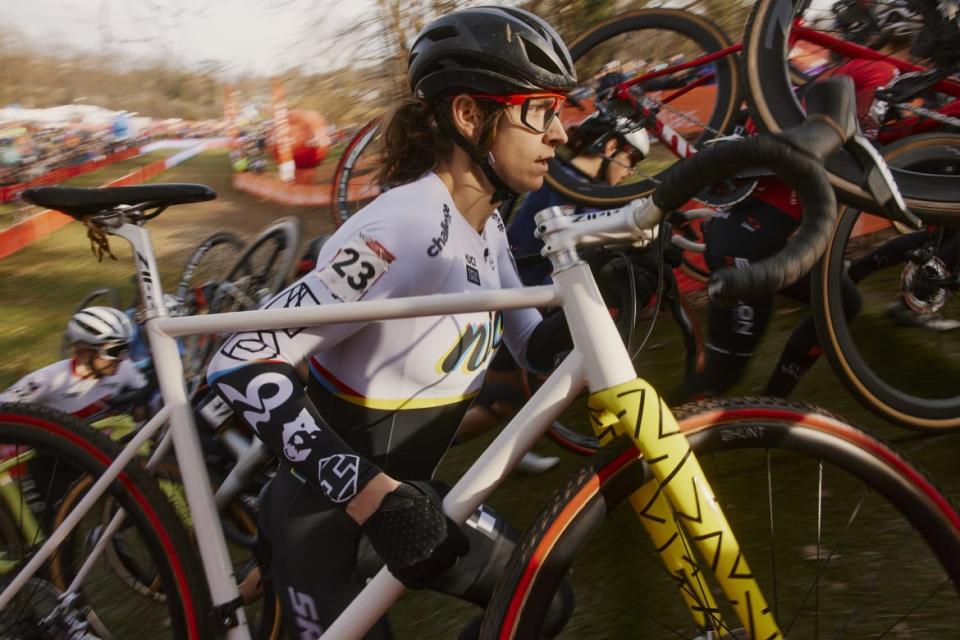
Rippon said this point is often conveniently left out of the discourse.
“What's not being told is the intensive process that a trans woman will have to go through to be recognized as a woman in a woman’s category,” Rippon said. “We’re not hearing from actual [trans] athletes, but what we do hear are the people who are afraid of what might happen. They’re afraid of some guy, who just decides he’s going to wear a dress and be like, ‘Well, I’m a woman now.’ That's not what’s happening. It’s just—again—men regulating what women's bodies should look like, and how they should act.”
Rippon points to the extremely low percentage of trans athletes in elite sports and the resulting lack of data for the governing bodies of sports to lean on. To understand more, I spoke to Dr. Joanna Harper, whose research at Loughborough University in the U.K. explores just how hormone therapy interacts with the abilities and physiques of athletic trans women, and how they compare to cis women athletes.
“The point of doing research isn't to inform policy. The point of doing research is to learn and find out more about our world,” Harper said to me on a recent Zoom call. “Having said that, I’m well aware that research into trans athletes has additional importance.”
Indeed, much of Harper’s role has been about informing policy. She was part of the panel that helped inform the International Olympic Committee (IOC) on a 2016 science-based approach, allowing trans women to compete in women’s competitions with proof of reduced testosterone levels. She was devastated when, in 2021, this approach was demolished, removing all gender-based restrictions to supposedly prioritize human rights.
“I think that [the IOC] erred very substantially and significantly in going down this path, not because I think that human rights are unimportant,” Harper—a prolific athlete and trans woman herself—made sure to clarify. The problem with the IOC removing all restrictions, she explained, is that it effectively creates a free-for-all, abdicating the implementation of guidelines and placing the onus on individual sporting governing bodies. Many of which are led by men, who more often than not lean conservative when viewing trans rights, she says.
At the root of the problem is the question of fairness, of creating a level playing field. It’s why Rippon was so horrified that Armstrong—whose inspirational quotes he witnessed first-hand being ripped off the Olympic Training Center wall in Colorado Springs, CO, just 30 minutes after denouncement in 2012 for taking enhancement substances—would consider his opinion relevant.
Nearly all athletic pursuits are separated into categories to promote fairness. Runners are sorted into age groups. Weight classes divide one sportsperson from another. Athletes with disabilities partake in the Paralympics. And since Title IX paved the way for women’s sports, most endeavors are segregated by gender. But with infinite natural differences within body types (put Simone Biles in a pool or Michael Phelps on a vault, and the U.S. would probably have far fewer Olympic medals on its roster), one begins to wonder: Is a level playing field even achievable? Can nature ever be disentangled from nurture?
“Sport is inherently unfair, and the quip I always use is: Ask anyone who had to guard Lebron James,” Harper joked. “However, when we separate sport into categories, we do so because we need to ensure that people within those categories have a reasonable chance of success, and right now we are saying, ‘Who is eligible for the female category?’”
Harper is named on studies showing that the typical cis male body has irrefutable natural sporting advantages over a typical cis female body. Higher testosterone produces higher hemoglobin levels, greater bone density, and generally, a larger overall size: These changes begin when a human body goes through male puberty. But here’s where it gets tricky, and it’s at the crux of her research: What happens to this advantage when an athlete undergoes a masculinizing puberty, but then suppresses testosterone?
“Ninety-five percent of all [cis] women have testosterone levels under two nanomoles per liter,” Harper explained. “A study from 2019—a large study by transgender standards, roughly 250 trans women—showed that 94 percent [of trans women on hormone therapy] had testosterone under two nanomoles.”
Confirming what Rippon had told me, she added that research on trans athletes is slow, not least because there are so few trans women competing professionally to begin with. Therefore, the fuss around women’s sports being overrun by higher-performing trans women is even more baffling.
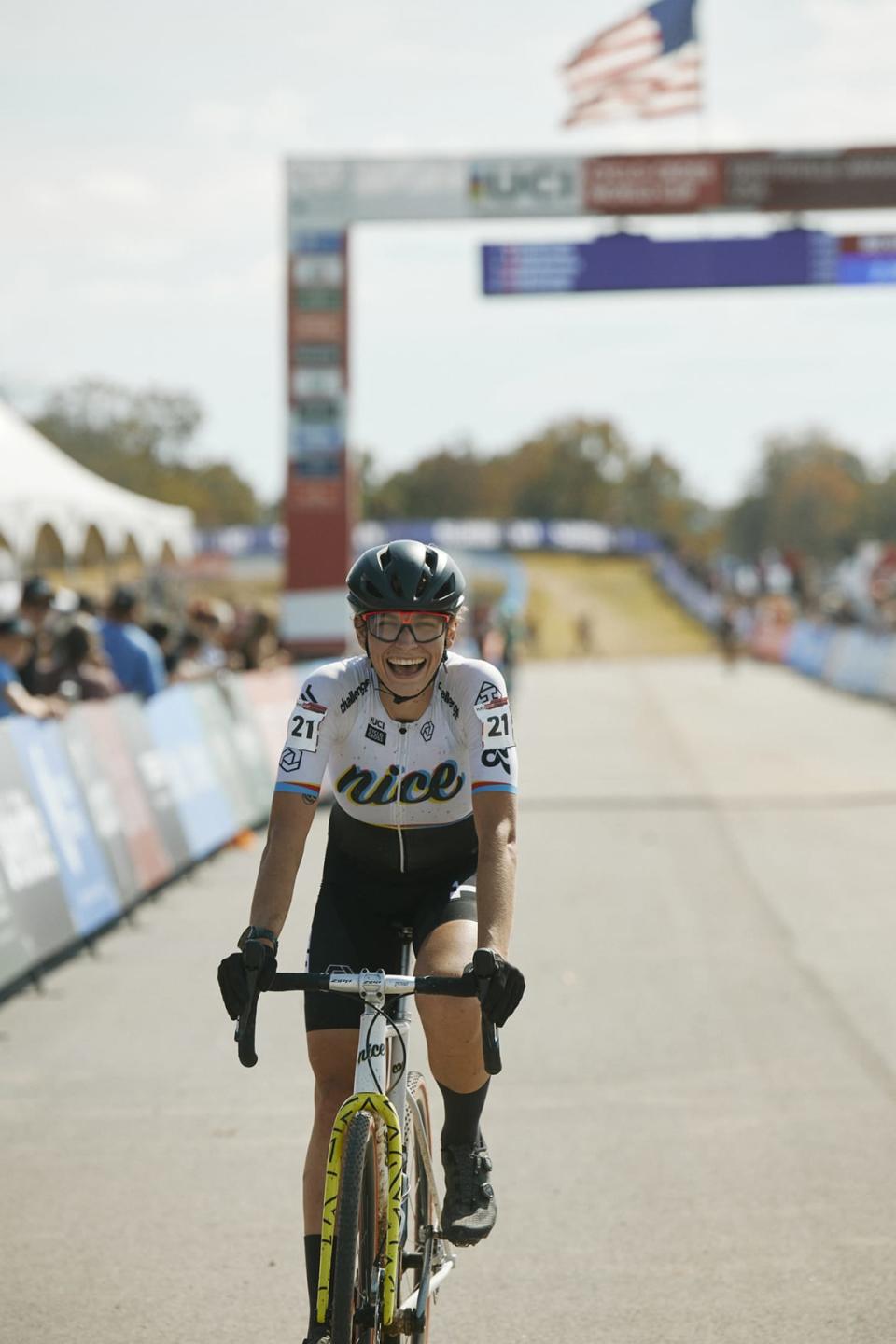
While many of Killips’ cis competitors have made statements of a supportive, or at least diplomatic nature, there are those who feel that her participation diminishes the viability of women’s sports as a serious endeavor. Canadian Olympic cyclist Alison Sydor posts prolifically on the subject on X, the website formerly known as Twitter. “Nice words but Killips could b [sic] honest with how he can now wear the queen of mtns [sic] jersey in a @UCI_cycling Americas Tour race,” she said, misgendering Killips in one of her many posts about her.
Martina Navratilova, tennis legend and lesbian icon, was also vocal about the Tour of the Gila results. “Transgender cyclist Austin Killips wins women’s race, causes outrage—this will happen more and more—women’s sports is NOT THE PLACE for trans identified male athletes,” she said on social media.
But perhaps most striking was champion cyclist Hannah Arensman. In an amicus brief to the Supreme Court that made no note of the effects of hormone therapy, she said she would be leaving the sport since, “It has become increasingly discouraging to train as hard as I do only to have to lose to a man with the unfair advantage of an androgenized body that intrinsically gives him an obvious advantage over me, no matter how hard I train.”
It’s true, Harper had added, that going through male puberty may give some size advantages, some innately remembered muscle memory from existing with higher hemoglobin levels coursing through young veins.
It’s worth noting that a 2020 study analyzing ultra-cycling data from 1996-2018 found that the longer the race, the less the difference in race times between the men’s and women’s categories. By 400 miles, no difference was found at all. In any case, since Killips began hormone therapy before she started elite-level training, it is impossible to characterize how transitioning has impacted her skills. Maybe her slim 5’10” frame, and not her rigorous training is in fact behind her recent success.
Global Cycling Body Defends Policy After Transgender Athlete Wins Gold
But the truth is, Killips’ times are not particularly outstanding. Her win time in New Mexico was only the 25th best there since 2011. Looking at splits of the race on the tracking app Strava, you can see her strategy, deploying trained technique on downhill sections, while her second-place opponent moved ahead on uphill portions—an area Killips says she is less comfortable in.
“They give me grief when I attest my success to training hard. But I know how other people train, and I know how I train, and when you get an autistic person like me, who’s just willing to do everything perfectly, I can do 7-to-8-hour days,” Killips told me. “I’m really good at training near-perfectly and trying to chase whatever marginal gains I can get, and I’ve just seen that my input/output is very consistent with other people who have the luxury of training at that level.”
Killips began racing relatively late compared to riders in European countries, where she says cycling is more baked into the culture. “Cycling just isn't as big of a sport in the States. I mean, obviously, we sort of had the up arrow with Lance [Armstrong], where he came to the fore and the collective consciousness, but that door opened… and then it closed,” Killips said.
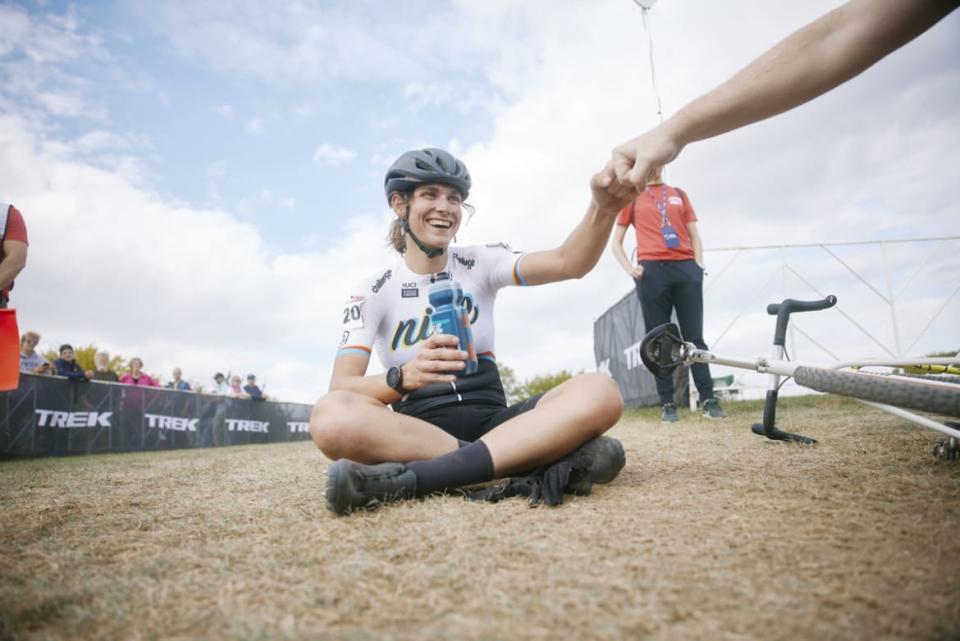
While working in a bike shop in Chicago, she began going out riding with friends, having fun, and finding community. She was encouraged to partake in some rule-free recreational races, but she was reluctant until hormone therapy diminished her advantage, conscious of the importance of fairness even when the stakes were low. But after reaching that benchmark, she fell in love with racing, committing on a level most non-athletes would find hard to understand, choosing to live in trailers, friends’ guest rooms, and even her car so that she could train. When the pandemic paused races, she became even more focused on skill-building, emerging onto the restarted competitive scene with some impressive race times.
Over the phone, Killips stoically noted the importance of making peace with one door closing, and new opportunities opening up, but this belied the fact that after the ruling she was in crisis mode, cycling for over eight hours a day in an effort to cope. She calls the rule change from UCI “a great injustice,” and hopes to somehow be part of a pushback; but not for herself.
“I went all in, and in a very comprehensive way,” she said. “I don’t know if I can just pick that up in X number of years and chase it again—and find that fulfilling or enjoyable. For me, it was chasing this thing, while I was still viable. And I think that that viability will start to taper off.”
That’s not to say she’s totally leaving it all behind. “I’d like to do some ultra-endurance stuff,” she said. “Because… I just really enjoy pedaling my bike all day.”
Adam Rippon Made History as an Openly Gay Athlete. Now He’s on Mars.
Killips is hopeful that eventually UCI’s ruling, and others like it, will be reversed. Her struggle—which she notes is intimately tied to the fight for reproductive rights and the rights of the whole LGBTQ+ community—is for bodily autonomy as well as the deployment of science over fearmongering.
“I don’t think there will ever be an undisputed line of demarcation,” Harper had added. “You’re not going to get one that’s universally approved. And that will be certainly true in my lifetime, and probably for long after I’m dead.”
In the same way that a quick Google search tells me that my daily coffee obsession will make me live longer, and also very likely kill me, the science may never be conclusive. But Harper’s research, still in its infancy, is indicating that we don’t need to fear an erasure of cis women when including trans women. For now, like Killips and Rippon, she hopes for a swing back to a more nuanced, science-based approach to safety in women’s sports.
“I think that in most sports, after hormone therapy, the remaining advantages that trans women have, will be shown to be not so large as to prevent meaningful competition between trans women and cis women,” Harper said. “And I think the data will eventually show that the science is not opposed to human rights.”
Get the Daily Beast's biggest scoops and scandals delivered right to your inbox. Sign up now.
Stay informed and gain unlimited access to the Daily Beast's unmatched reporting. Subscribe now.

